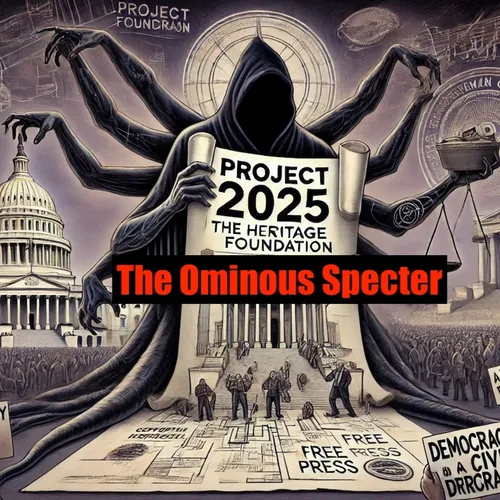Transforming American Governance: The Ambitious and Controversial Project 2025
- Author
- Quiet.Please
- Published
- Tue 02 Sep 2025
- Episode Link
- https://www.spreaker.com/episode/transforming-american-governance-the-ambitious-and-controversial-project-2025--67601265
Project 2025 is not just a policy blueprint—it’s a movement aiming to remake American governance from the ground up. Growing out of the Heritage Foundation’s nearly 1,000-page Mandate for Leadership, Project 2025 lays out detailed steps to reshape the federal government in ways that, in its authors’ words, will “destroy the Administrative State.” Supporters see it as a plan to bring an unaccountable bureaucracy under control, while critics warn it risks undermining the checks and balances at the heart of American democracy.
At the heart of Project 2025 is an ambitious assertion of presidential control over the federal government. The proposal rests on the controversial unitary executive theory—a vision that would give the president direct authority over agencies traditionally considered independent. According to Heritage Foundation president Kevin Roberts, “All federal employees should answer to the president.” That’s not an abstract idea; the plan explicitly calls for replacing civil service protections with the so-called Schedule F scheme, permitting mass firings and replacing thousands of current staffers with political loyalists who can be hired—and fired—at will. The stated aim is to ensure government personnel are “aligned with the president’s vision,” a move that legal experts like those at the ACLU say could erode the rule of law and the traditional separation of church and state.
One of the most consequential aspects of Project 2025 is its Day One playbook—hundreds of executive orders prepared for immediate signature by a new Republican president. These directives aren’t vague. The plan recommends, for example, eliminating entire agencies such as the Consumer Financial Protection Bureau. It also outlines how to dismiss all Department of State leadership before the next inauguration, replacing them with interim officials who are “ideologically vetted,” bypassing Senate confirmation. Kiron Skinner, who contributed to the State Department chapter, told journalist Peter Bergen this summer, “Most State Department employees are too left-wing and must be replaced by those loyal to the president,” though she could not name concrete examples of alleged obstruction.
The intended changes go far beyond personnel shuffles. Project 2025 includes proposals for increasing executive control over policy on education, health, and the environment—often with the goal of terminating or rolling back regulations deemed “woke” or outside a conservative agenda. For example, its environmental proposals would gut major climate initiatives and environmental protections, while social policy sections support rolling back abortion rights and LGBTQ protections. Heritage Foundation materials state that these moves are needed to “put the people back in charge,” but organizations like the Center for Progressive Reform warn that such changes could devastate protections for workers, the public’s health, and marginalized communities.
Concrete steps are already underway. Since January, under the new Department of Government Efficiency, agencies have announced mass layoffs and office closures, with an eye toward shrinking government to its “essential functions.” According to data cited by Government Executive, more than 280,000 federal workers and contractors are facing layoffs or job uncertainty across 27 federal agencies. Office buildings are being consolidated, and a strict return-to-office mandate is being enforced to reduce federal infrastructure, often in a haphazard fashion.
Project 2025’s vision is not universally accepted even within conservative circles, but its scale and urgency have jolted both supporters and opponents. Critics, from policy experts to civil liberties advocates, argue that replacing career professionals with political operatives risks turning agencies into arms of the executive, threatening not just efficiency but the stability of American institutions. Yet, for its...
